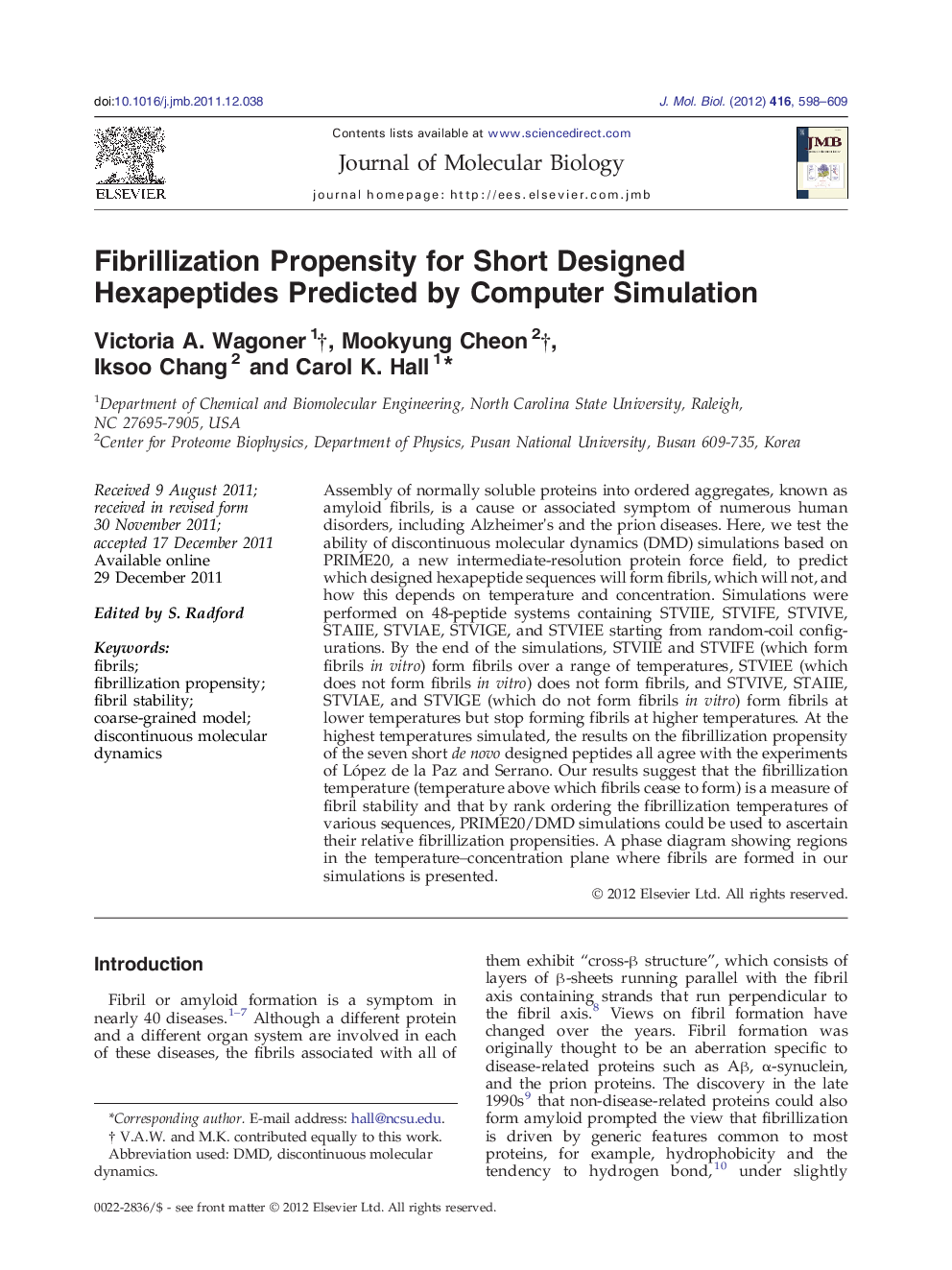| کد مقاله | کد نشریه | سال انتشار | مقاله انگلیسی | نسخه تمام متن |
|---|---|---|---|---|
| 2184759 | 1095926 | 2012 | 12 صفحه PDF | دانلود رایگان |

Assembly of normally soluble proteins into ordered aggregates, known as amyloid fibrils, is a cause or associated symptom of numerous human disorders, including Alzheimer's and the prion diseases. Here, we test the ability of discontinuous molecular dynamics (DMD) simulations based on PRIME20, a new intermediate-resolution protein force field, to predict which designed hexapeptide sequences will form fibrils, which will not, and how this depends on temperature and concentration. Simulations were performed on 48-peptide systems containing STVIIE, STVIFE, STVIVE, STAIIE, STVIAE, STVIGE, and STVIEE starting from random-coil configurations. By the end of the simulations, STVIIE and STVIFE (which form fibrils in vitro) form fibrils over a range of temperatures, STVIEE (which does not form fibrils in vitro) does not form fibrils, and STVIVE, STAIIE, STVIAE, and STVIGE (which do not form fibrils in vitro) form fibrils at lower temperatures but stop forming fibrils at higher temperatures. At the highest temperatures simulated, the results on the fibrillization propensity of the seven short de novo designed peptides all agree with the experiments of López de la Paz and Serrano. Our results suggest that the fibrillization temperature (temperature above which fibrils cease to form) is a measure of fibril stability and that by rank ordering the fibrillization temperatures of various sequences, PRIME20/DMD simulations could be used to ascertain their relative fibrillization propensities. A phase diagram showing regions in the temperature–concentration plane where fibrils are formed in our simulations is presented.
Graphical AbstractFigure optionsDownload high-quality image (197 K)Download as PowerPoint slideResearch Highlights
► We examine aggregation propensities of seven hexapeptide sequences based on STVIEE.
► DMD simulations with PRIME20 are performed on 48 peptides.
► Fibrillar structures form spontaneously, depending on sequence and temperature.
► At highest temperatures, predicted aggregation propensities agree with experiments.
► Results suggest that fibrillization propensity is related to fibrillization temperature.
Journal: Journal of Molecular Biology - Volume 416, Issue 4, 2 March 2012, Pages 598–609